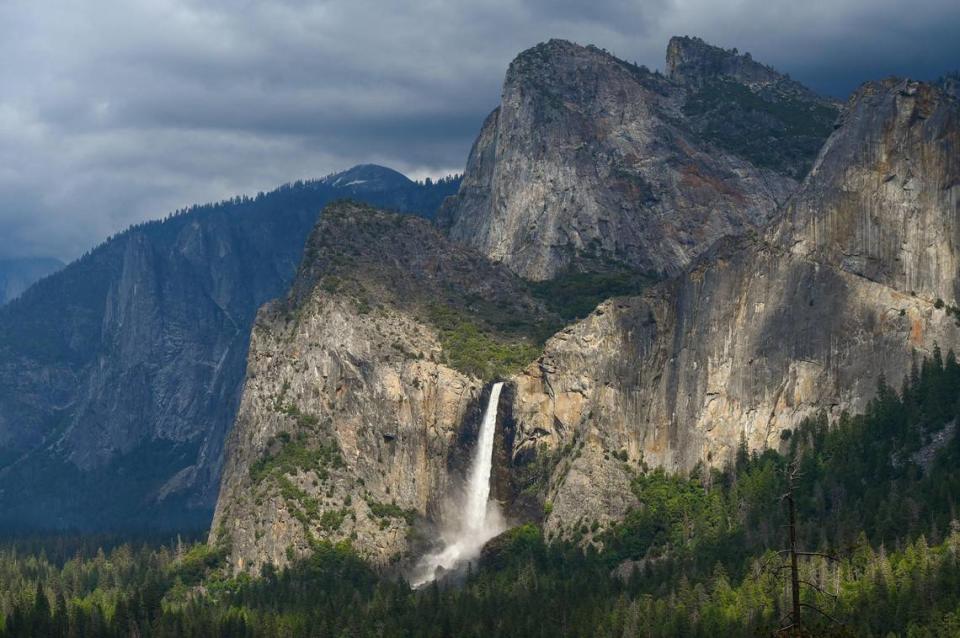Despite Fresno County supervisors’ resistance, public transit to Yosemite isn’t dead | Opinion
When it comes to forward thinking, one can always count on the Fresno County Board of Supervisors to display their myopia.
The latest vision check involved public transit. Specifically bus service between Yosemite National Park and the city where 53.7% of all Fresno County residents live. Not to mention the 12.5% that reside in the adjoining berg.
During Tuesday’s meeting, the Fresno County supervisors were offered the chance to join five nearby counties as full members of the Joint Powers Authority that operates the Yosemite Area Regional Transportation System. Alternatively, they could’ve opted to partner with the city of Fresno and split the costs and responsibilities 50-50.
The county supes chose to do nothing. No vote was taken — even though the YARTS decision was listed on the agenda as an “action item.” Rather, they plead poverty and shuffled the matter aside in the unlikely event a funding source appears out of thin air.
Opinion
Does that mean public transit between Fresno and Yosemite is DOA?
Thankfully, no.
With Fresno County uninterested, YARTS is expected to send an invitation to Fresno City Hall — where it will receive a much warmer reception.
“We would welcome joining with the county and splitting the costs and board seats,” Fresno City Manager Georgeanne White said prior to Tuesday’s non-vote by the county board. “But if the county supervisors don’t want anything to do with it, we would definitely be interested in going alone.”
Joining YARTS would cost the city $50,600 on an annual basis. That covers two daily round-trips between Fresno-Yosemite International Airport and Yosemite Valley during late spring to early fall, including a stop at the downtown Amtrak and Greyhound station. (The $50,600 includes operations expenses.)
YARTS operates bus routes between Yosemite and neighboring counties along Highway 140, Highway 120, Highway 41 and Highways 395/120 East. The Merced route runs year-round; the other three are seasonal.
The 10-member YARTS JPA board consists entirely of county supervisors — two apiece from Madera, Mariposa, Merced, Mono and Tuolumne. Their initial preference, according to YARTS executive director Stacie Guzman, was for Fresno County to join or to adopt the county/city hybrid.
But since the county supes tabled the offer — and with time running short before summer — Guzman expects her leadership to switch gears and invite California’s fifth-largest city instead.
“I’m very hopeful,” Guzman said. “Board members have expressed to me that they want to see the Fresno route continue. It’s really in the best interest of the community and the service as a whole.”
Not just for tourists
It’s interesting how government officials from other counties can recognize the benefits of YARTS while our own cannot. So allow me to spell them out.
Public transit between Fresno and a world-famous destination that attracts nearly 4 million visitors every year isn’t just about tourists or where tourism dollars may end up.
It’s also about Fresno County residents. Many of whom don’t drive, can’t afford $5 per gallon for gasoline or didn’t plan months in advance to procure one of the daily reservations now required for park entry.
For those people, riding the bus is the only way to visit Yosemite during peak season. Yet Fresno County Supervisor Sal Quintero, who requested the YARTS topic be brought before the board, never mentioned them.
Instead, the supervisor for south Fresno stammered for a bit without making any salient points or posing relevant questions to staff. Steve Brandau, the supervisor representing north Fresno, was silent.

County Administrative Officer Paul Nerland advised the supervisors not to pay for YARTS out of the county’s general fund. If they did, Nerland cautioned, cuts would have to come from elsewhere.
Guzman, who was in attendance, informed the supervisors that none of the five counties on the JPA pay those costs from their general funds. Rather, she told them they come from transportation grants — including Merced County’s $300,000 annual share — and that the National Park Service covers 40% of YARTS’ operating expenses.
Those bits of news appeared to catch the supervisors unaware. Nerland responded by saying those funds are allocated as well, and the discussion died shortly thereafter.
YARTS began contacting Fresno County officials last fall to gauge interest. Because it’s taken so long for the supervisors to act — or more accurately, not to — any service this year will be delayed.
The Highway 41 route between Yosemite and Oakhurst begins May 10. However, due to a six-week lag required to adjust driver schedules and hire more drivers, Guzman said the earliest it could start in Fresno is June 15.
And that’s only if YARTS and the city can work out an agreement before the end of April. Any later than that, according to Guzman, and we might as well wait until 2025. The next YARTS board meeting is Monday.
If I were the cynical type, I’d suggest Fresno County sabotaged the city of Fresno (which last year saved YARTS at the 11th hour) on purpose. Perhaps because they’re bitter the city filed a lawsuit over the county’s general plan, not to mention the ongoing tax-sharing impasse.
Myopia combined with pettiness? Nothing would surprise.

